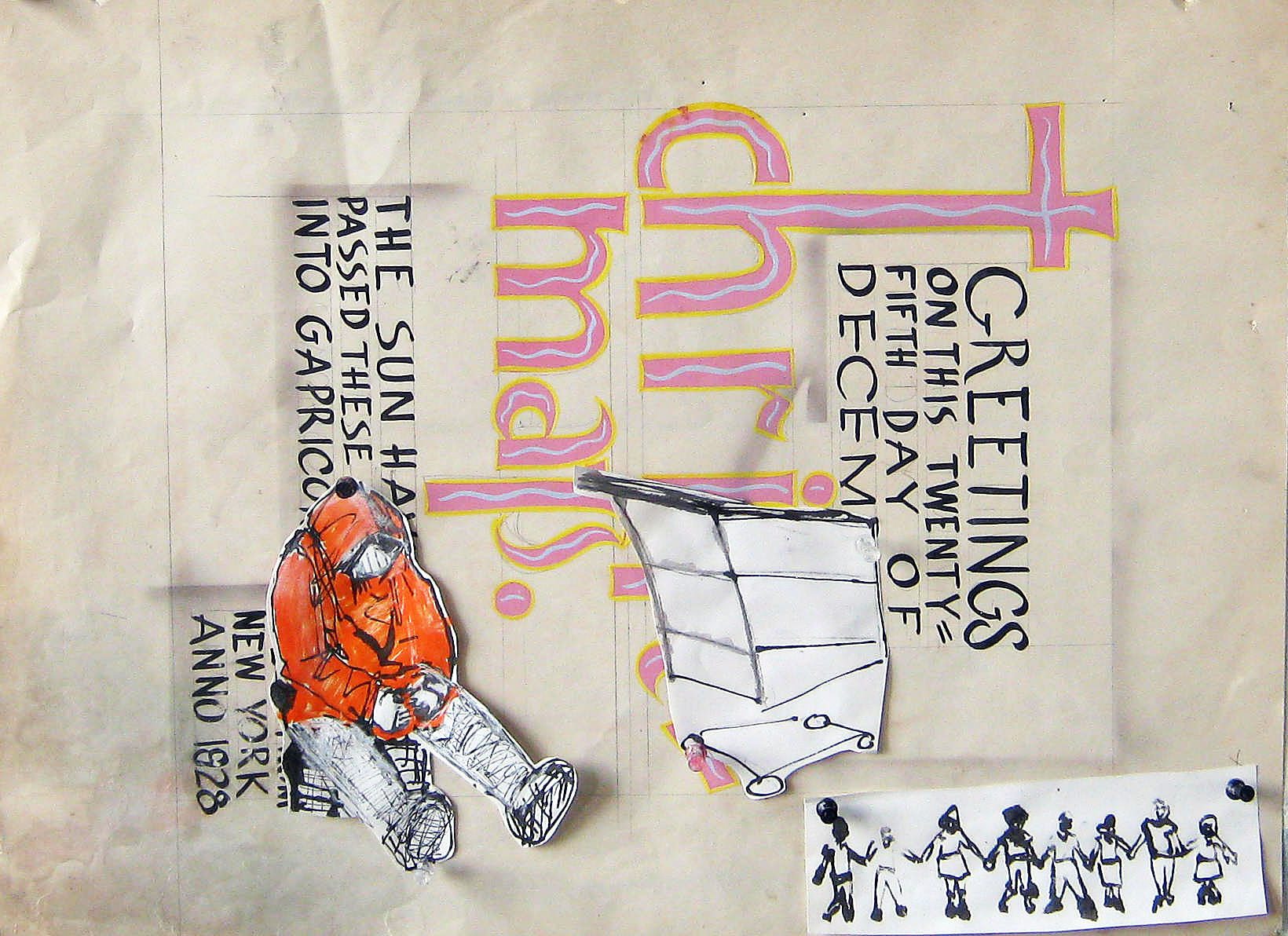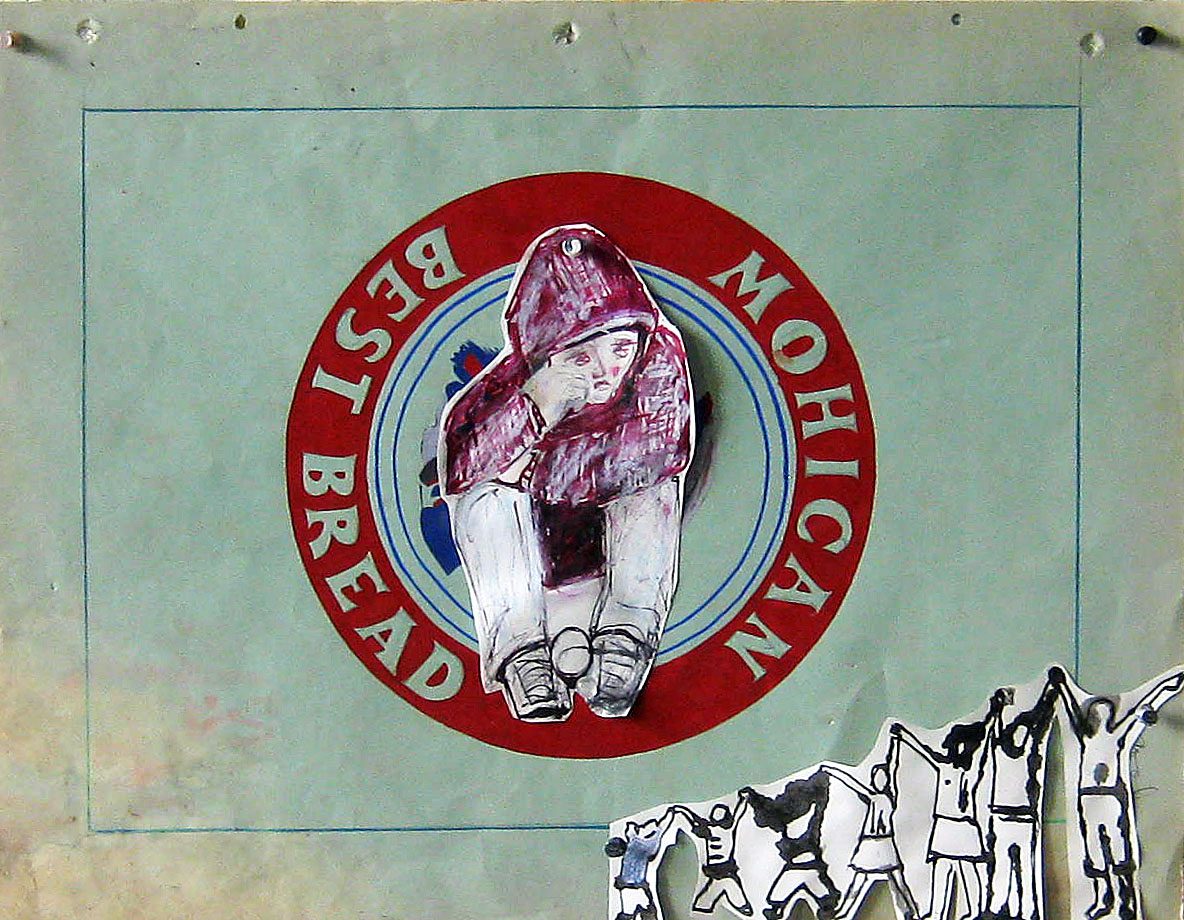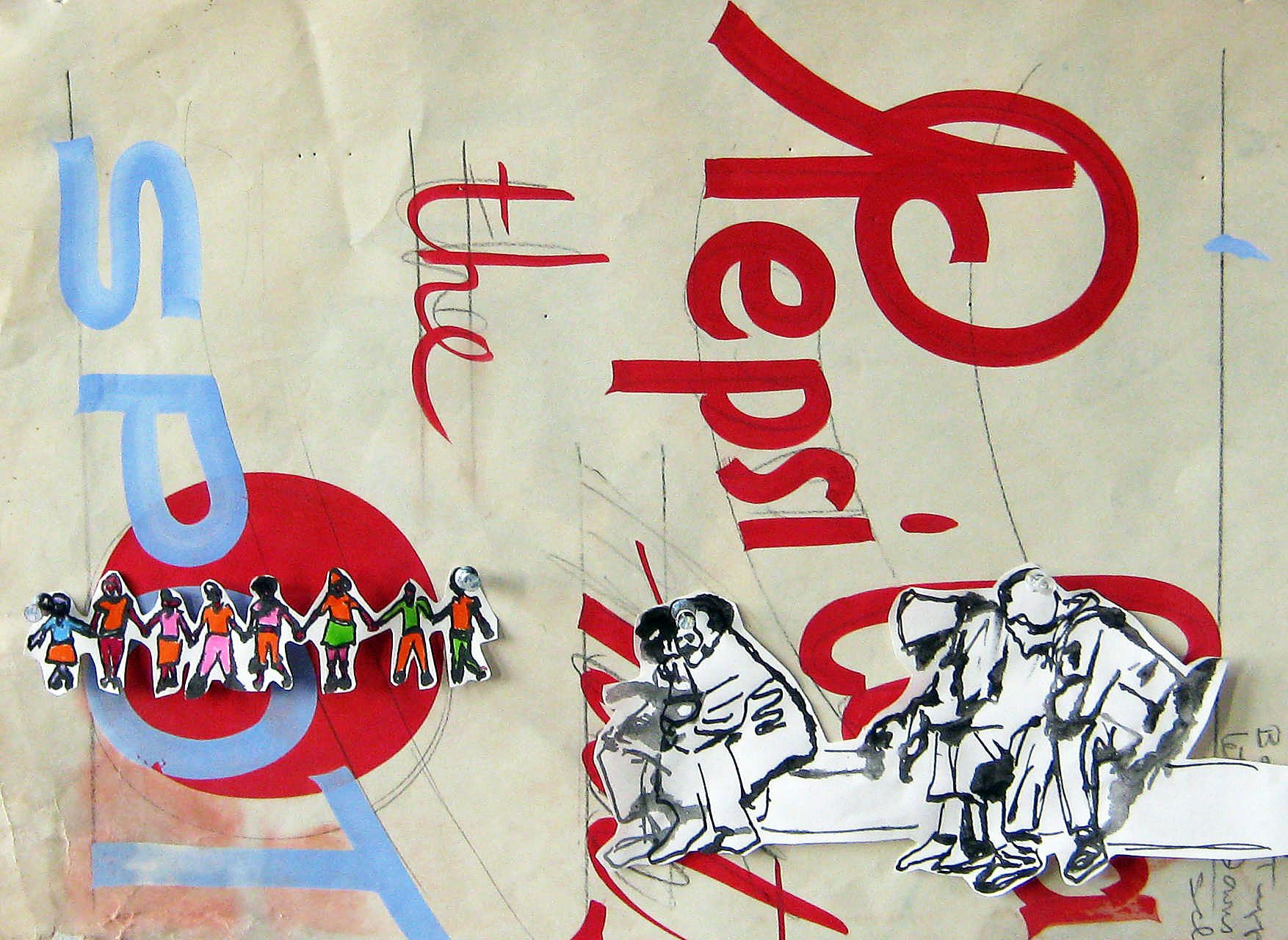
We open in a wide framing shot of autumn-tinged trees lining a schoolyard. A procession of first-graders walk-run-skip down the sidewalk circling the school. They are doing this, as the lead teacher’s sign says, to raise awareness about homelessness. You are aware of the young man sleeping in the alcove of a shuttered storefront in your neighborhood, only a few blocks from a pageant of high-end boutiques and a salon that specializes in stick-straight blow-dried hair. You are aware of the camp, covered in swaths of plastic sheeting, that you pass when you pick up your oldest child from school. You are aware of the shelter in your newly adopted city—the one that bears the same name as the place you once called home.
You are the only parent who joins the first-graders, a mother who holds her son’s hand and warns his classmates against running with the pointed sticks they collect as they move forward. You hear one child ask another: What are we doing out here?
 Form “L”s with your index fingers and thumbs to make a frame. Hold the frame up to the light to see the past.
Form “L”s with your index fingers and thumbs to make a frame. Hold the frame up to the light to see the past.
You hear the narrator say: It’s easy to sever a vestige like this if you convince yourself that your own experience happened to someone else.
She looks a lot like you, save for the partially shaved head and steel-toed boots. You can recall pieces of her story in the way that you remember seeing films as a child. The plot is somewhat hazy and some scenes are clearer than others. You know that you’ve seen it before, but the timeline feels distorted, not like the “time” that you live now.
The scene shifts. Now you are watching an after-school special, a long-form public service announcement:
The story starts in medias res. You see the protagonist, the lost girl, step off a greyhound bus in a small southern city strangled by heat. She has spent the last of her crumpled dollars getting to a homeless shelter for teens. She has no place to return to, no place she feels welcomed or safe. She finds a pay phone just outside the station. She calls a toll-free hotline and notices the man’s voice crescendo as he tells her, “There isn’t any room.”
You adjust yourself in your seat, aware of the tension in your muscles, the hollow of your bones, while you watch the girl try to find comfort as she makes a ghost bed on a concrete bathroom floor. She uses her backpack as a pillow and chants a lullaby to her sore body: It will be better tomorrow. It will be better tomorrow. The station agent bangs on the door when she starts to drift off. Somehow, you know how she feels, as if her bones will liquefy from exhaustion.
The narrator says: This is what happens to girls who go astray. This is what happens when one angry push onto the couch builds upon argument after argument and creates a mass  of unforgivable memories that nobody can see their way around.
of unforgivable memories that nobody can see their way around.
She calls the shelter twice a day to see if her luck has changed. Three days on hot metal benches stretch out before her. Hand-holding families and tourists surround her, as if she has mistakenly stepped into a brochure for spring break destinations. Her back is weighed down by the contents of a short-haul life crushed into a canvas backpack. Her head is a hive made of static fear. Blurred silhouettes wander too close at night. She is always on the move, the hunger for rest devouring the hunger for food. Finally, the voice on the phone tells her that she has someplace to go.
Now you are watching a bizarro-world John Hughes film:
The lost girl is at the shelter and it is lunchtime. The sun’s fever has left marks on her skin. She has in-processed. Her answers to a thousand questions have been deemed sufficient. No one else will have her.
In the room where the kids eat, the tables are divided according to groups. Just like the fleeting memories of high school that she can recall, lost kids stick to their tribes. The pregnant girls link tables together, stretching out their legs and exhaling with every movement. At least two of them share a room with the lost girl, but there are too many girls to keep track of. Some have babies and move into another room. Some don’t follow the rules and do their penance in the street.
You see another table occupied by the boys who push their chairs back so far that they are nearly laying down flat, the boys who “don’t give a fuck” (as they say, again and again, trying to convince themselves).
The kids who don’t have a home because they don’t love “the right way” welcome the lost girl. You watch the girl nod as she listens to a boy tell her about his plan to get out and make a new life. He has an idea of where he can get a job. He has a timeline. He has goals. You nod as he describes the life that is waiting for him. He is The Boy Full of Promise. You both believe: This kid has it together. He will be out of there in no time.
He has an idea of where he can get a job. He has a timeline. He has goals. You nod as he describes the life that is waiting for him. He is The Boy Full of Promise. You both believe: This kid has it together. He will be out of there in no time.
Now you are watching a nature documentary:
The narrator says: When faced with a potential bear attack, open your coat, with your arms extended, to make your body appear bigger and more intimidating. With luck, the animal will retreat.
After a month of searching and pleading, the lost girl has found a minimum wage job. She covers her shaved head with a knitted beret. The buses have stopped running and the girl is due back at the shelter after her shift. If she is late, there will be consequences. If there are too many consequences, she will be asked to leave the shelter.
She bulks up her 105-pound frame by wearing an oversized faux-leather jacket and black jeans tucked into 20-eyed Docs. She moves quickly through the dark. As she crosses an empty parking lot, a car pulls a swift U-turn and nearly runs into her. The headlights shine in her eyes. She cannot see who is inside. It roars closer, pivoting left and right with her movements as she tries to walk around it. She feels the currents running from her chest to her head. She stops, spreads her arms open, tightens her fists, and lets out a scream that surges up her throat and echoes beyond the blank sky. The engine revs once more as the car pulls away. The lost girl vibrates until she makes it to the shelter. She wonders what path she will take when she walks home alone again the next night.
The scenes are moving faster now and things go a bit David Lynch:
Time has no thread, no line that leads from beginning to end. The lost girl lifts the curtain of night and turns a corner, two blocks from the shelter. She sees one of her pregnant roommates standing by the road: the one with a smattering of freckles running across her nose, the one who was told to leave the shelter, temporarily, for some rumored infraction. A car pulls up and the pregnant girl leans her round body into the car door, looking for a place to call home for the night. The driver instructs her with a flick of the head. The pregnant girl lowers her body into the passenger seat and disappears.
The lost girl continues down the road and time leaps forward. She runs into “The Boy Full of Promise” at the shelter’s outpost downtown on a choking-hot afternoon. He is at least twenty-five pounds lighter. Her fingers skim his sharp spine when she hugs him hello. “The plan did not go as planned,” he says. He has come for a sandwich and to ask a counselor about getting an HIV test. The lost girl will never see him again.
 The scene changes again without warning. The lost girl has moved into an apartment with three other kids from the shelter. They gather around the one steel pot that they share and eat macaroni and cheese (mixed with water instead of milk) with plastic spoons. The heaviness of the apartment complex feels like a correctional facility. Random kids, the ones that the lost girl runs into and invites into her new chaos, sleep on the dirty-orange shag carpet in her living room. The roommates and guests rotate names and faces as they find jobs, lose jobs, and search for someplace that feels like home.
The scene changes again without warning. The lost girl has moved into an apartment with three other kids from the shelter. They gather around the one steel pot that they share and eat macaroni and cheese (mixed with water instead of milk) with plastic spoons. The heaviness of the apartment complex feels like a correctional facility. Random kids, the ones that the lost girl runs into and invites into her new chaos, sleep on the dirty-orange shag carpet in her living room. The roommates and guests rotate names and faces as they find jobs, lose jobs, and search for someplace that feels like home.
Time jumps again and the montage is making you, the viewer, feel ill. The lost girl sits on a couch in a room draped by red curtains. She does not know how she got there. She remembers fragments of a nightmare, of kids that were like her and were swallowed up by circumstance. Their parts were filmed and left on the cutting room floor. She can remember their faces but she cannot remember names.
The shelter kids are filing into the room, one by one, until there is no room left. The lost girl gets up and runs out, down endless hallways and through doors that open into the same room, over and over, until she opens a curtain and finds herself walking down a sidewalk, holding her little boy’s hand.
Now you have returned to your body. You are the “you” that everyone knows. You have made it through shit jobs and expensive degrees. You have married and given birth and found work. You are watching a parade of children file into school:
Some of the children have joined hands in a chain as you help lead them toward the front door of the school. As you walk with the children, you wonder how you could talk to them about homelessness and why you are with them. They jump and sing and point out how the leaves have changed from green to gold, not knowing that the color existed within the leaves all along. You can’t find the words to explain to them what you know because you cannot explain it to yourself. You don’t know how to tell them that a home is not an unyielding structure that will always be waiting for them or that sometimes our sense of home teeters on the edge of chance. All you want is to watch them play and laugh and to know that they will go home to open arms and warm beds.
You look back at their smiling faces, and back further until you can barely distinguish one child from the next, straining to focus in on the ones lagging around the corner that you hear but cannot see. You imagine that, far back down the line, the children are holding hands with the kids you knew at the shelter—the pregnant girls, the mothers, the frightened, the lonely, the ones full of hope—leading them back to the happy ending that you wish you could write.
***
Rumpus original art by Carl Dimitri.




